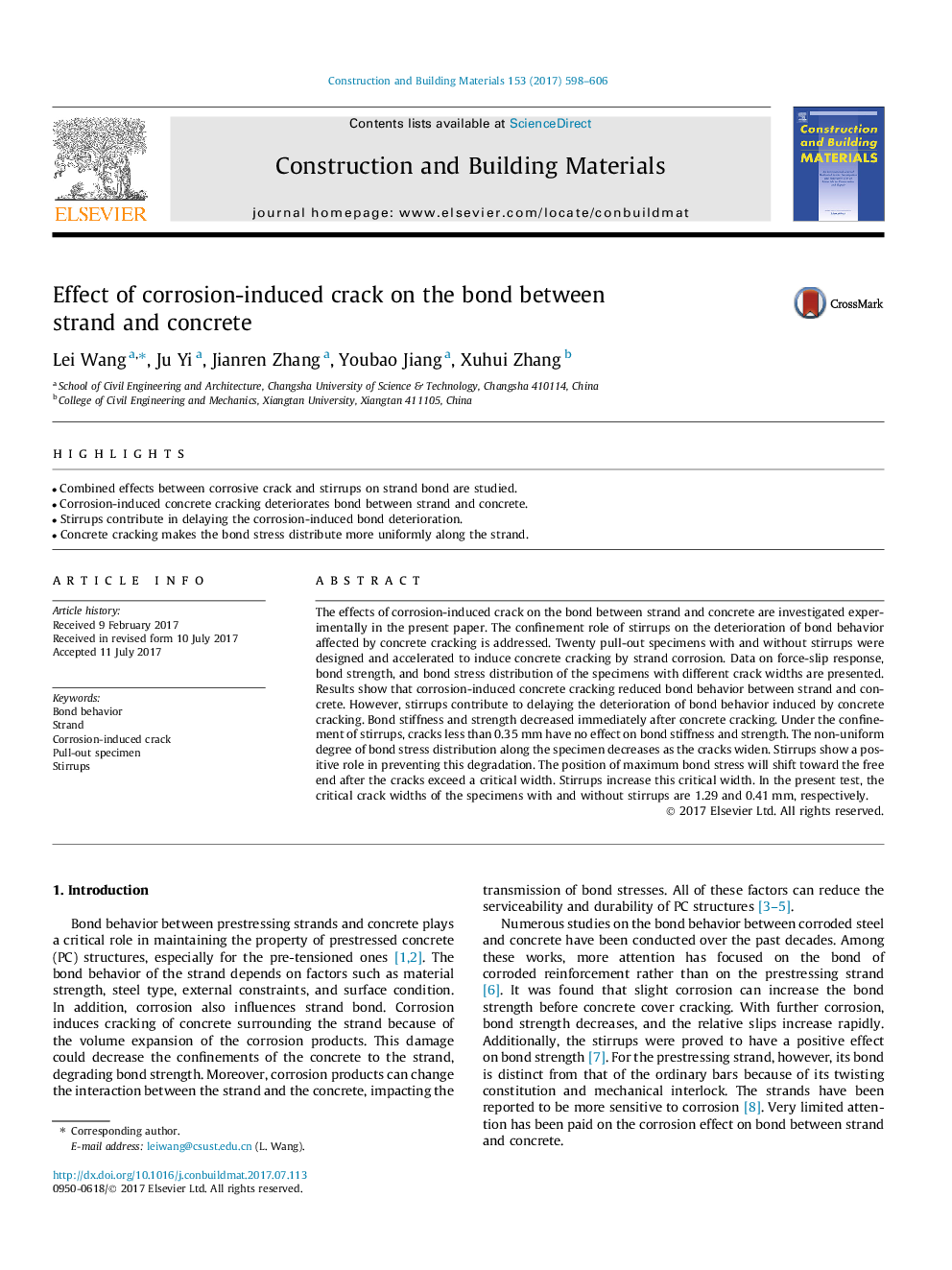| Article ID | Journal | Published Year | Pages | File Type |
|---|---|---|---|---|
| 4913005 | Construction and Building Materials | 2017 | 9 Pages |
Abstract
The effects of corrosion-induced crack on the bond between strand and concrete are investigated experimentally in the present paper. The confinement role of stirrups on the deterioration of bond behavior affected by concrete cracking is addressed. Twenty pull-out specimens with and without stirrups were designed and accelerated to induce concrete cracking by strand corrosion. Data on force-slip response, bond strength, and bond stress distribution of the specimens with different crack widths are presented. Results show that corrosion-induced concrete cracking reduced bond behavior between strand and concrete. However, stirrups contribute to delaying the deterioration of bond behavior induced by concrete cracking. Bond stiffness and strength decreased immediately after concrete cracking. Under the confinement of stirrups, cracks less than 0.35Â mm have no effect on bond stiffness and strength. The non-uniform degree of bond stress distribution along the specimen decreases as the cracks widen. Stirrups show a positive role in preventing this degradation. The position of maximum bond stress will shift toward the free end after the cracks exceed a critical width. Stirrups increase this critical width. In the present test, the critical crack widths of the specimens with and without stirrups are 1.29 and 0.41Â mm, respectively.
Keywords
Related Topics
Physical Sciences and Engineering
Engineering
Civil and Structural Engineering
Authors
Lei Wang, Ju Yi, Jianren Zhang, Youbao Jiang, Xuhui Zhang,
